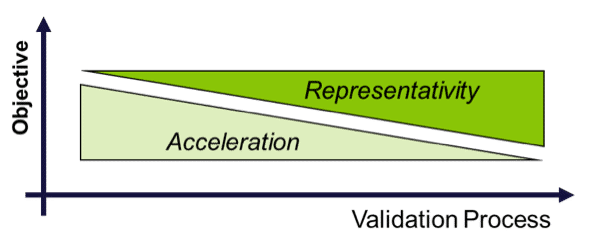The standard methods of technical reliability are not usefully applicable to all tasks in practice. Uptime ENGINEERING has therefore developed a comprehensive set of special methods for the reliability process over the last few years. This was often done to solve specific tasks in the context of customer projects. Novel tasks in current projects also lead to a permanent expansion of the method library.
The focus is on methods of applied statistics and physics of failure. In general, a design is pursued that supports the consistent reliability process in the product life cycle in the best possible way. The methods are therefore implemented in Uptime SOLUTIONS in a generic, parameterized form. As a result, they are quickly available for all applications of the software without any programming work.

Testing simulates the intended product usage in order to reveal design weaknesses. As both time-to-market and the related costs are critical, tests have to be efficient, i.e. they have to deliver a maximum of information within the given schedule. Two types of tests are intelligently combined in order to achieve this goal:
Accelerated testing (HALT, HASS) is done for well understood failure mechanisms. Prototype components allow for test execution at a very early stage of product development.
Representative testing aims to cover all possible failure modes – including unknown phenomena. The system under development should be subjected to various realistic operation modes and boundary conditions.
Fig: Transition from test acceleration to representation along the validation process

Tests are designed wirh respect to customer usage patterns of the product as identified in the Usage Space Analysis. In general, component testing is directed to suppliers with supervision and guidance from the OEM. Test acceleration is achieved via the intensity and the frequency of load. The test contributions to validation against various failure mechanisms are evaluated via Damage Calculation in order to avoid over- or under-testing.
A well-balanced sequence of accelerated and representative tests provides the highest efficiency of a Validation programme. Accelerated tests demonstrate component maturity at early stages of product development. This allows for front-loading of problem solving.
It keeps the development process on track at reduced costs. It minimizes the failure rate of subsequent representative tests. Overall, a well-designed sequence of tests leads to the maximum actual reliability demonstration.

The Uptime ENGINEERING system risk assessment performs top-down identification of various types of risks, related to technology, time, organisation, quality and maintenance. It considers the system design, the manufacturing processes, the usage conditions, applications, lifetime expectations, etc. Complementary to the system risk assessement, bottom-up analysis is used for a detailed assessment of functional and reliability risks.
The system risks deliver the tasks for the Reliability Plan, which organizes the contributions from various OEM teams and suppliers. It eliminates non-technical risks in order to improve the efficiency of verification and validation testing.
A comprehensive risk analysis delivers the basis for a systematic product development, outlined in the Verification and Validation programme. The risk analysis also identifies tradeoffs between targets at an early stage of product development. Thus, it contributes to the front-loading of problem solving prior to costly prototyping.
You are currently viewing a placeholder content from Facebook. To access the actual content, click the button below. Please note that doing so will share data with third-party providers.
More Information